Did you ever wake up to find your fridge door ajar all night long?
The thought of potentially spoiled food might leave you wondering: Is food left in an open fridge overnight still safe to eat? It’s a common concern for many of us.
In this article, we’ll explore the potential risks associated with leaving a fridge open overnight and shed light on whether the food inside remains safe for consumption.
So, let’s dive in and uncover the facts to ensure your food safety!
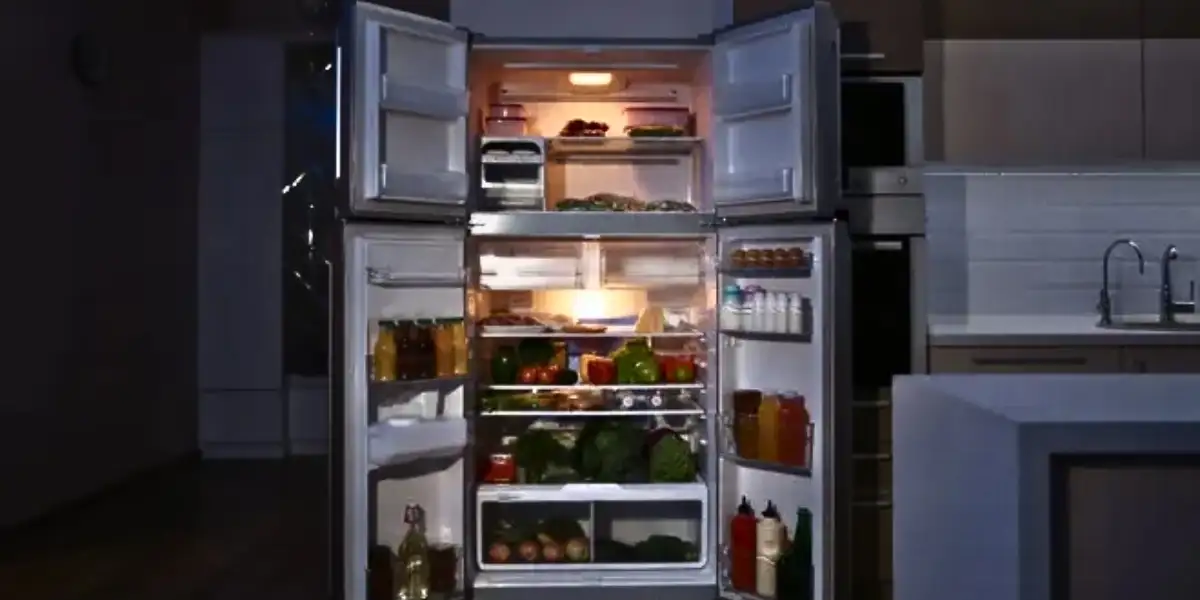
Fridge left open overnight is food safe?
Leaving a fridge open overnight jeopardizes the safety of the food inside. The fluctuating temperatures can promote bacterial growth, increasing the risk of foodborne illnesses.
It’s best to discard any perishable items to ensure your health and well-being.
What are the Risks of Leaving a Fridge Open Overnight?
Leaving your fridge open overnight can lead to several risks that compromise the safety of your food.
Here’s what you need to know:
1. Bacterial Growth:
When the fridge door is open, the temperature inside rises, creating an ideal environment for bacteria to multiply rapidly.
These bacteria can contaminate your food, increasing the risk of foodborne illnesses.
2. Spoilage:
Exposure to warm air causes certain perishable items, such as dairy products, meats, and leftovers, to spoil more quickly.
This can result in an unpleasant smell, texture, and taste, rendering the food unsafe to consume.
3. Nutrient Loss:
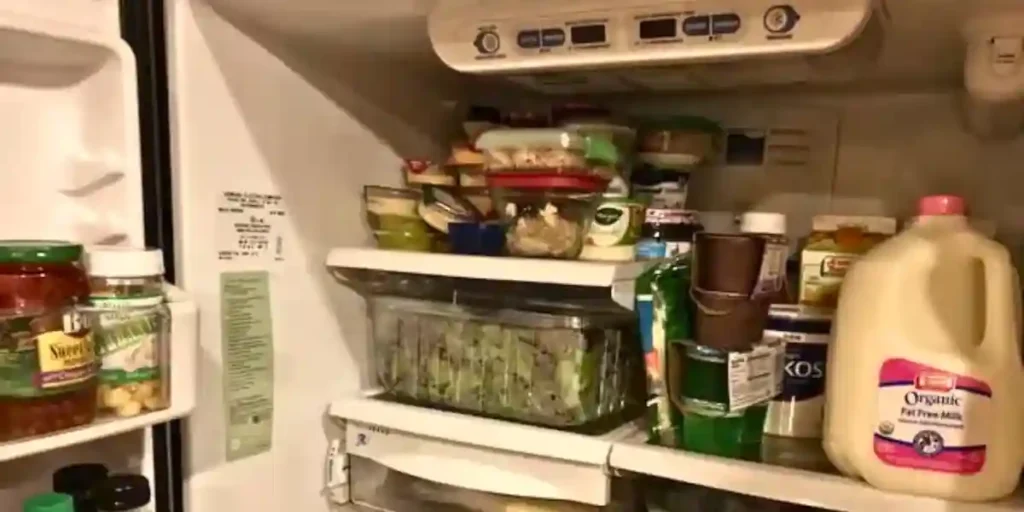
Extended exposure to fluctuating temperatures can lead to the loss of vital nutrients in your food.
This can impact the overall nutritional value of the items, affecting your health and well-being.
4. Cross-Contamination:
Leaving the fridge open allows airborne particles and odors to enter, potentially contaminating other stored foods.
This can result in cross-contamination, where harmful bacteria from one item spread to others, further compromising food safety.
5. Increased Energy Consumption:
An open fridge requires extra energy to maintain its internal temperature. This can lead to increased energy consumption and higher electricity bills, putting a strain on your resources.
The Impact of Temperature on Food Safety
By understanding and carefully managing temperatures throughout the storage, cooking, and serving processes, you can significantly reduce the risk of foodborne illnesses and keep your meals safe and enjoyable.
1. Cold Storage:
Refrigeration slows down bacterial growth and helps maintain the freshness of perishable items. Set your refrigerator temperature at or below 40°F (4°C) to keep your food safe.
Ensure that the refrigerator door seals tightly and avoid overcrowding the shelves, as proper air circulation is crucial for maintaining consistent temperatures.
2. Freezing:
Freezing food at or below 0°F (-18°C) halts bacterial growth entirely. However, it’s important to note that freezing doesn’t kill bacteria; it merely suspends their activity.
Thaw frozen foods in the refrigerator or use the microwave defrost setting to prevent bacteria from multiplying.
3. Hot Food Holding:
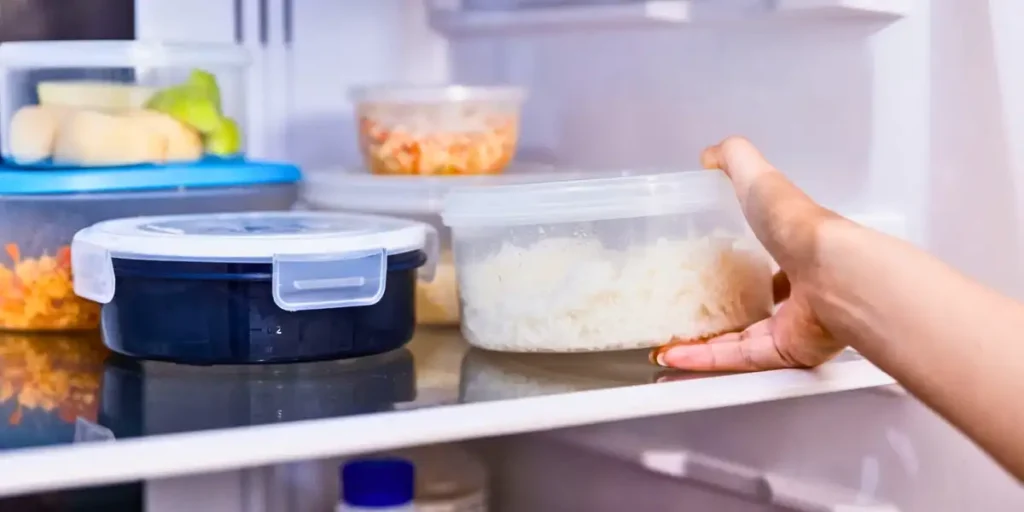
Holding hot cooked foods at temperatures above 140°F (60°C) is crucial to ensure their safety.
When keeping food warm, use chafing dishes, slow cookers, or warming trays. Avoid prolonged periods in the temperature danger zone to prevent bacterial growth.
4. Cooking Temperatures:
Proper cooking temperatures are essential for destroying harmful bacteria. Use a food thermometer to ensure that meats, poultry, and seafood reach their recommended internal temperatures.
For example, cook the chicken to at least 165°F (74°C) and ground beef to 160°F (71°C) to eliminate any potential pathogens.
5. Serving Temperatures:
Serve hot foods immediately after cooking or keep them hot at 140°F (60°C) or above.
Cold foods, such as salads or desserts, should be served chilled at temperatures below 40°F (4°C) to maintain their safety.
Potential Foodborne Illnesses from Unrefrigerated Food
Leaving food unrefrigerated for extended periods can lead to the growth of harmful bacteria, increasing the risk of foodborne illnesses.
Here are some common foodborne illnesses and their symptoms:
1. Salmonellosis:
This infection is caused by Salmonella bacteria. Symptoms include diarrhea, abdominal cramps, fever, and vomiting.
In severe cases, it may lead to dehydration. Contaminated poultry, eggs, raw milk, and produce are common sources of Salmonella.
2. Campylobacteriosis:
Campylobacter bacteria cause this illness. Symptoms include diarrhea (sometimes bloody), abdominal pain, fever, and nausea.
Undercooked poultry, raw milk, and contaminated water are often responsible for Campylobacter infections.
2. Escherichia coli (E. coli) Infections:
Certain strains of E. coli, such as E. coli O157:H7, can cause severe illness. Symptoms include bloody diarrhea, abdominal pain, and sometimes kidney failure.
Undercooked ground beef, raw produce, and contaminated water are common sources of E. coli infections.
3. Listeriosis:
Listeria monocytogenes bacteria cause this infection. Symptoms may include fever, muscle aches, nausea, and diarrhea.
Pregnant women, the elderly, and individuals with weakened immune systems are particularly vulnerable.
Contaminated deli meats, soft cheeses, and raw milk are common sources of Listeria.
4. Staphylococcal Food Poisoning:

Staphylococcus aureus bacteria produce toxins that cause rapid-onset food poisoning. Symptoms include nausea, vomiting, abdominal cramps, and diarrhea.
Foods handled by infected individuals and left at room temperature are common sources of Staphylococcal food poisoning.
5. Clostridium Perfringens Infections:
Clostridium perfringens bacteria thrive in improperly stored cooked foods. Symptoms include abdominal cramps and diarrhea.
Large quantities of contaminated meat, poultry, and gravies can cause these infections.
How to Assess the Safety of Food Left in an Open Fridge Overnight?
When you discover that your fridge has been left open overnight, it’s essential to assess the safety of the food inside before consuming it. Follow these steps to make an informed decision:
1. Inspect the Temperature:
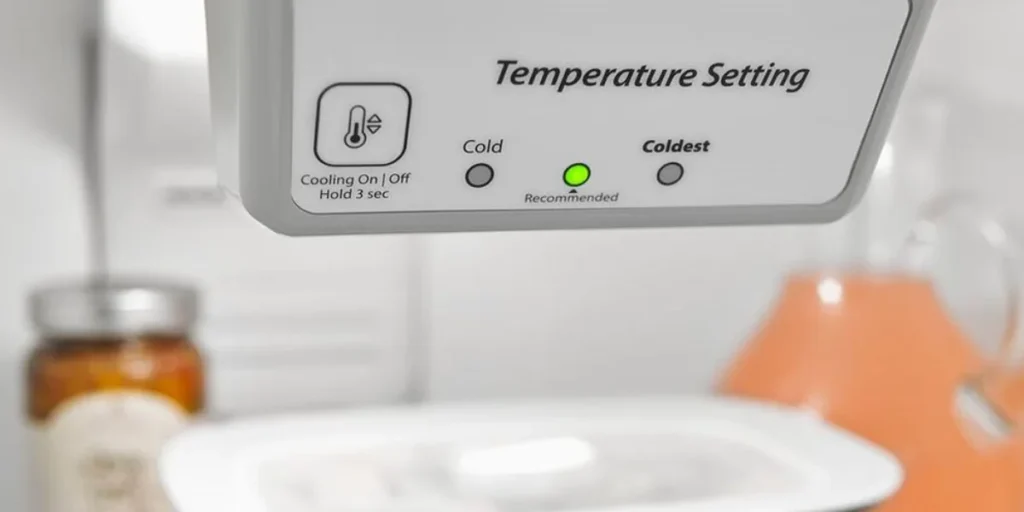
Check the temperature inside the fridge. If the temperature exceeds 40°F (4°C), the food may no longer be safe to eat. Use a food thermometer to get an accurate reading.
2. Evaluate the Time:
Consider how long the fridge was left open. If the duration exceeds two hours (or one hour if the ambient temperature is above 90°F/32°C), the risk of bacterial growth and spoilage increases significantly.
3. Examine the Condition:
Inspect the food for any signs of spoilage, such as an off odor, unusual texture, or discoloration. Trust your senses and remember that “when in doubt, throw it out.”
4. Assess the Type of Food:
Different foods have varying levels of susceptibility to bacterial growth and spoilage.
Perishable items like meats, dairy products, and cooked leftovers are more prone to contamination. Consider the nature of the food before making a decision.
5. Consider the Packaging:
Sealed and properly wrapped foods have a higher chance of remaining safe compared to those exposed to air.
If the packaging appears compromised or damaged, it’s safer to discard the item.
6. Prioritize Food Safety:
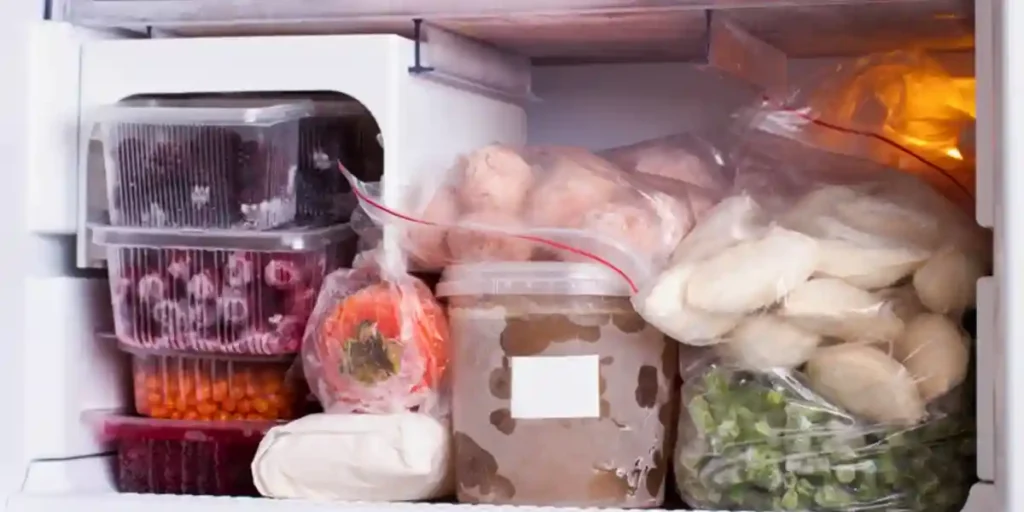
When in doubt, prioritize your health and well-being over potential food waste. It’s better to be cautious and avoid the risk of foodborne illnesses.
7. Follow General Guidelines:
Familiarize yourself with general food safety guidelines. For example, the “2-hour rule” states that perishable foods should not be kept at room temperature for more than two hours.
8. Trust Your Judgment:
Ultimately, trust your judgment and personal comfort level. If you have any doubts about the safety of the food, it’s best to err on the side of caution and dispose of it.
Preventive Measures to Maintain Food Safety in the Fridge
To ensure the safety of your food and prevent bacterial growth and contamination, follow these preventive measures for proper fridge maintenance:
1. Organize and Rotate:
Arrange your fridge in a way that allows for proper air circulation. Place perishable items, such as meats and dairy products, on the lower shelves to prevent any potential drips or leaks from contaminating other foods.
Additionally, practice the “first in, first out” principle by rotating your food items, using older ones before newer ones, to minimize waste and ensure freshness.
2. Proper Storage:
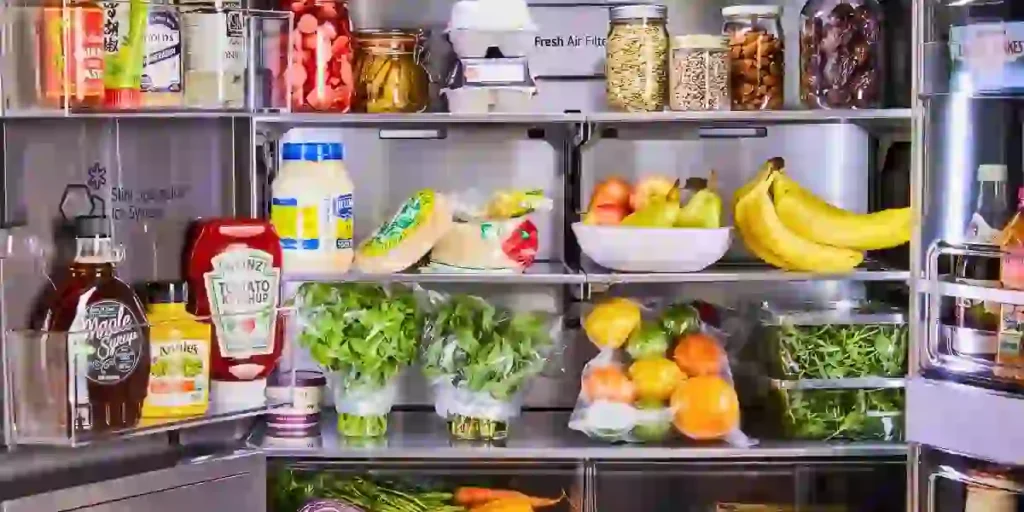
Store raw meats, poultry, and seafood on a plate or in sealed containers to prevent their juices from dripping onto other foods.
Keep them on the lowest shelf or in a dedicated drawer to minimize cross-contamination.
Use airtight containers or wrap leftovers tightly with plastic wrap or foil to maintain their quality and prevent odor transfer.
3. Temperature Control:
Set your fridge temperature at or below 40°F (4°C) to inhibit bacterial growth. Use a refrigerator thermometer to regularly monitor the temperature and ensure it remains within the safe range.
4. Regular Cleaning:
Clean your fridge regularly to remove spills, crumbs, and food residues that can harbor bacteria.
Use a mixture of mild soap and water to wipe down the interior surfaces, shelves, and drawers.
Pay special attention to the seals and door gaskets, as they can accumulate dirt and grime.
5. Odor Control:
Place an open box of baking soda or a bowl of activated charcoal in the fridge to absorb any unpleasant odors.
Replace it every three months or as needed to keep the fridge smelling fresh.
6. Avoid Overcrowding:
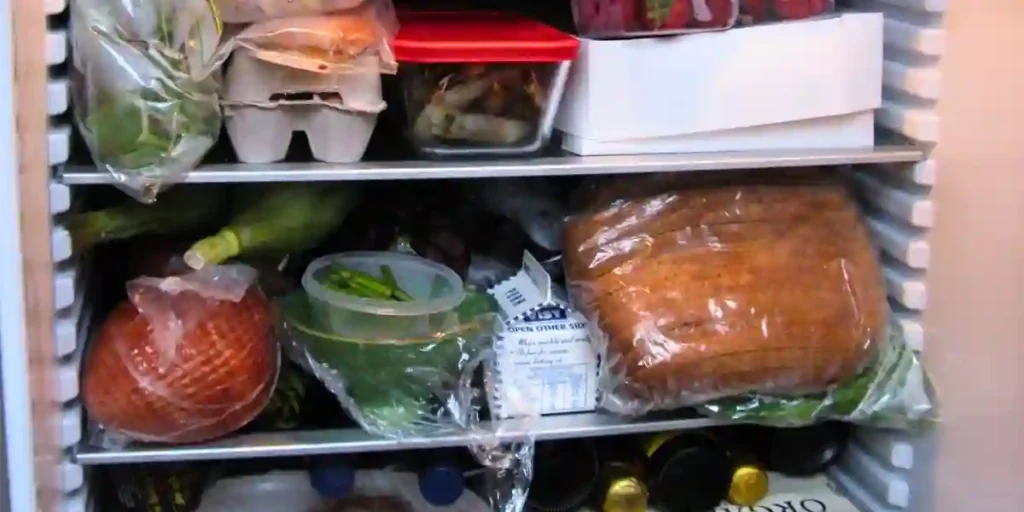
Avoid overpacking your fridge, as overcrowding restricts proper air circulation and can lead to uneven cooling.
Allow space between food items to promote consistent temperatures and prevent the growth of bacteria.
7. Regular Maintenance:
Check the seals and gaskets on your fridge door regularly to ensure they are intact and free from damage.
Damaged seals can result in air leakage, compromising the cooling efficiency and potentially leading to unsafe temperatures.
8. Power Outages:
During a power outage, keep the fridge door closed as much as possible to maintain the internal temperature.
An unopened fridge can keep food at a safe temperature for about four hours. If the power outage lasts longer, consider moving perishable items to a cooler with ice.
FAQs
1. How Long Can Food Be Left Unrefrigerated Before It Becomes Unsafe?
Perishable food should not be left unrefrigerated for more than two hours. If the ambient temperature is above 90°F (32°C), the time reduces to one hour.
After this timeframe, the risk of bacterial growth and spoilage significantly increases.
2. How Can I Tell If The Food Left In The Open Fridge Is Still Safe To Eat?
Inspect the temperature of the fridge, the time it was left open, and the condition of the food.
If the temperature exceeds 40°F (4°C), it was left open for more than two hours, or the food shows signs of spoilage, it is best to discard it.
3. Can I Save The Food By Refrigerating It Again After It Was Left In An Open Fridge Overnight?
Unfortunately, refrigerating the food again will not make it safe to consume. The time spent in the temperature danger zone allows bacteria to multiply rapidly, making the food unsafe.
4. Is It Better To Be Safe Than Sorry And Just Throw Away The Food?
Yes, it is always better to prioritize your health and discard any food that has been left in an open fridge overnight.
Foodborne illnesses can have severe consequences, so it’s best to err on the side of caution and avoid potential risks.
Conclusion
Ensure the safety of your food by never taking chances with an open fridge overnight.
Leaving it unattended exposes your food to bacterial growth, potential spoilage, and the risk of foodborne illnesses.
Remember, your health is at stake, so trust your instincts and discard any questionable items.
Keep your fridge closed and maintain proper temperature control to preserve the freshness and safety of your food.
